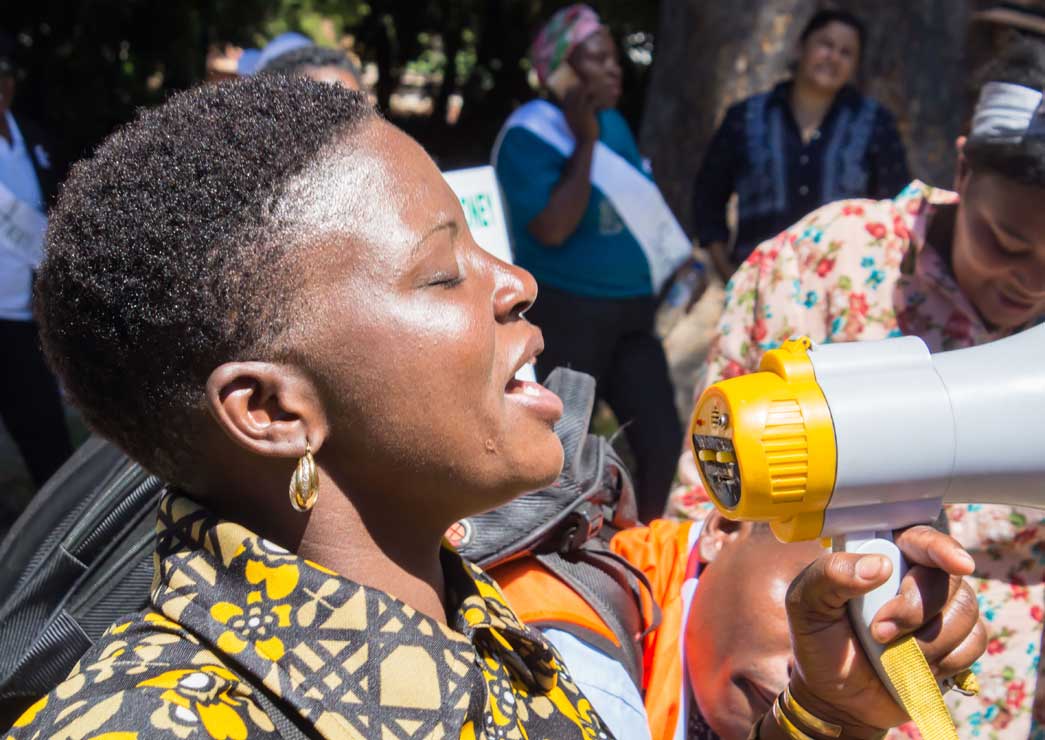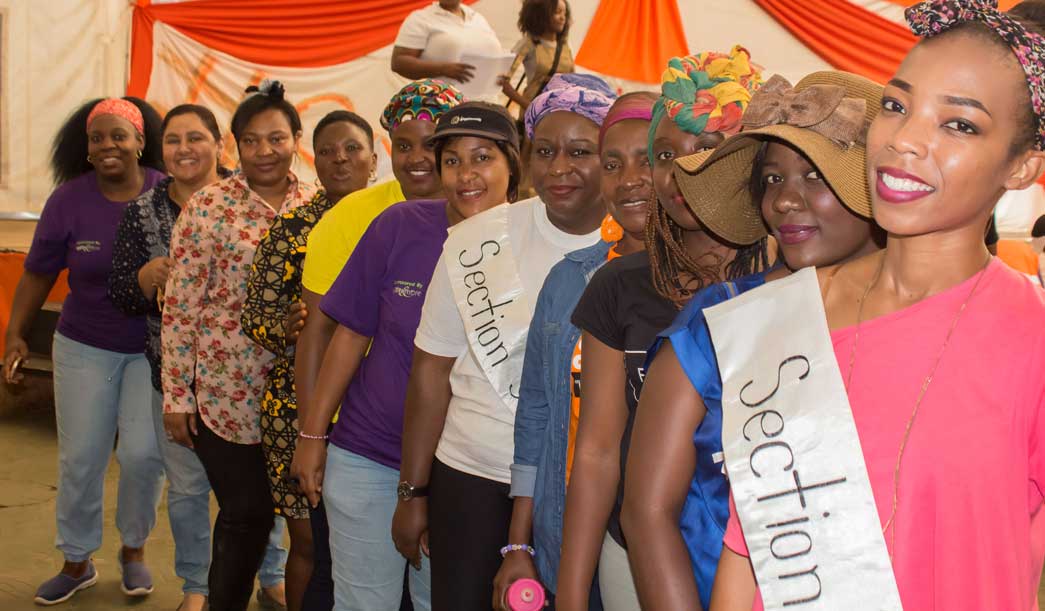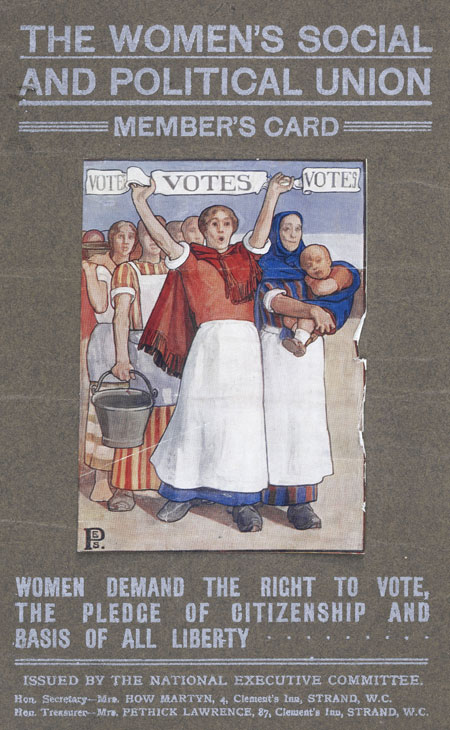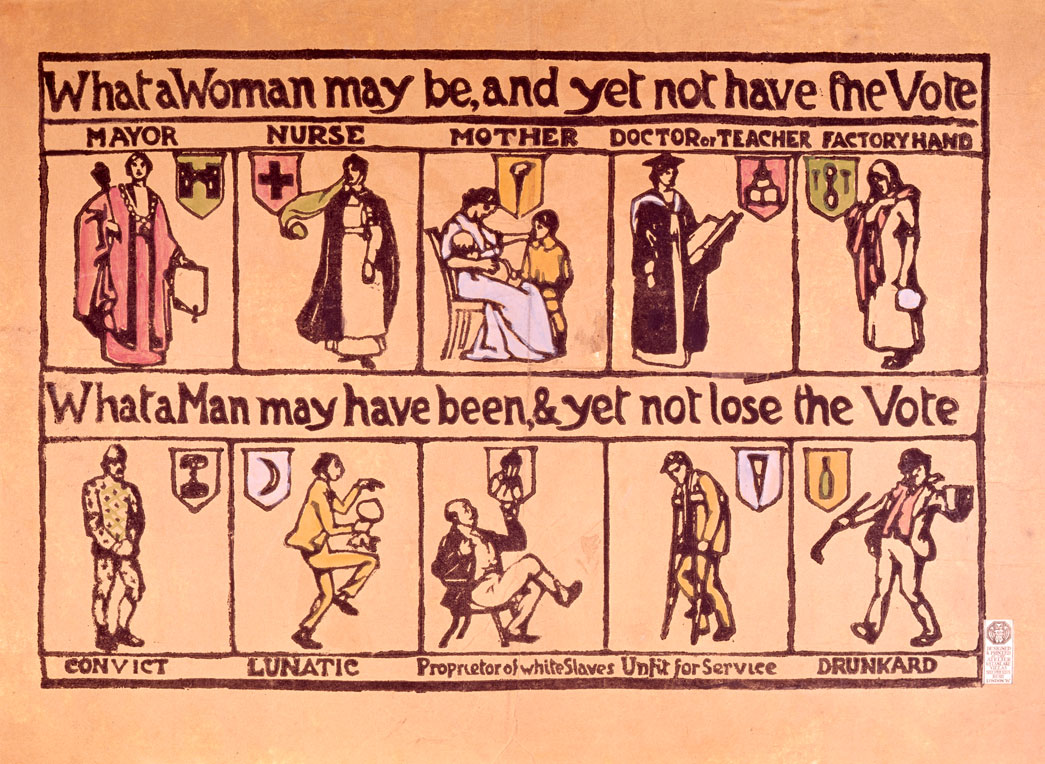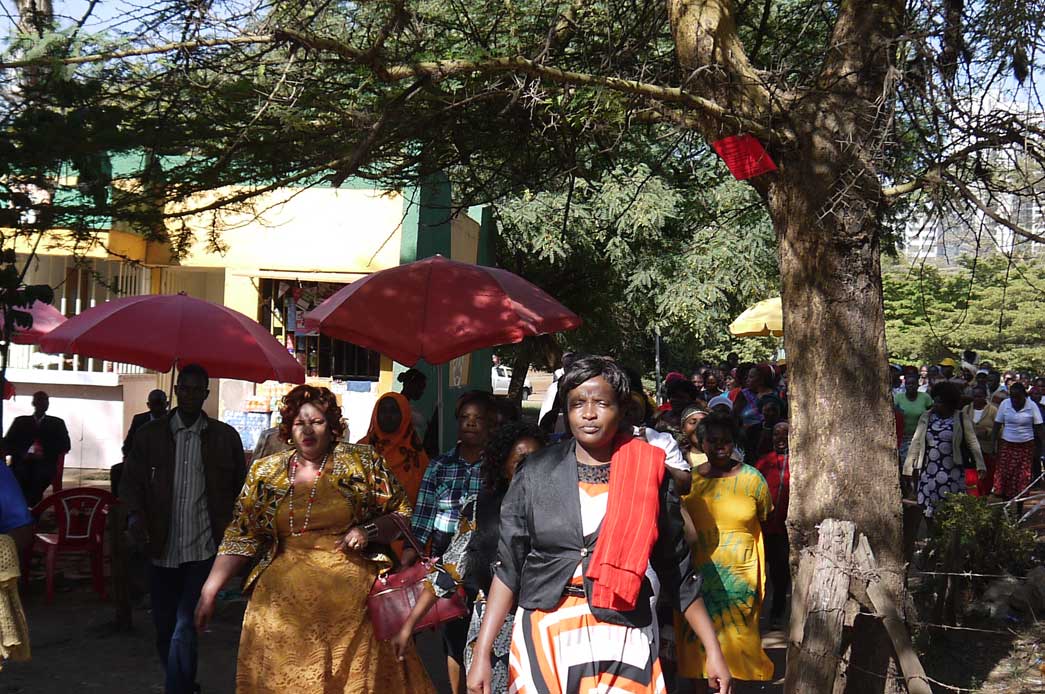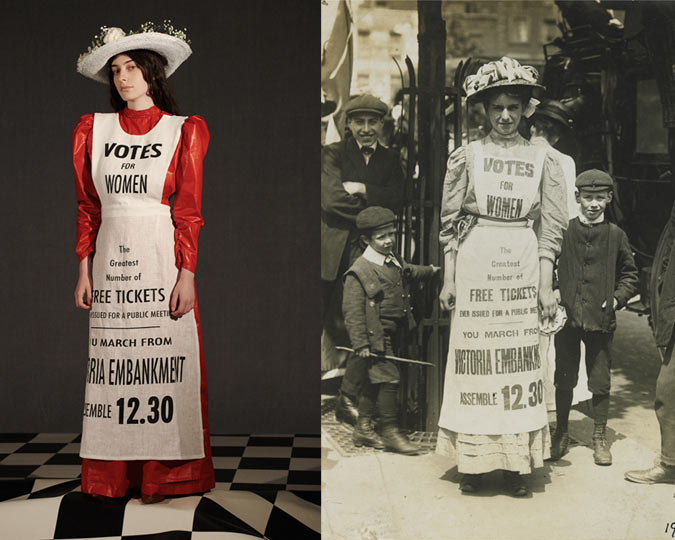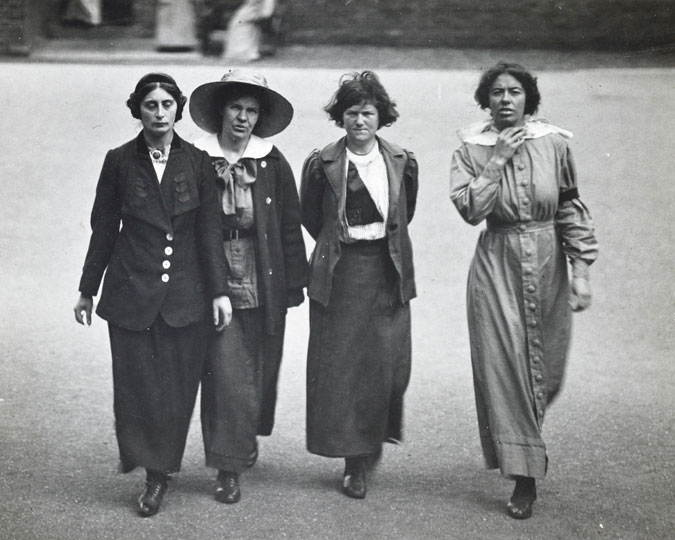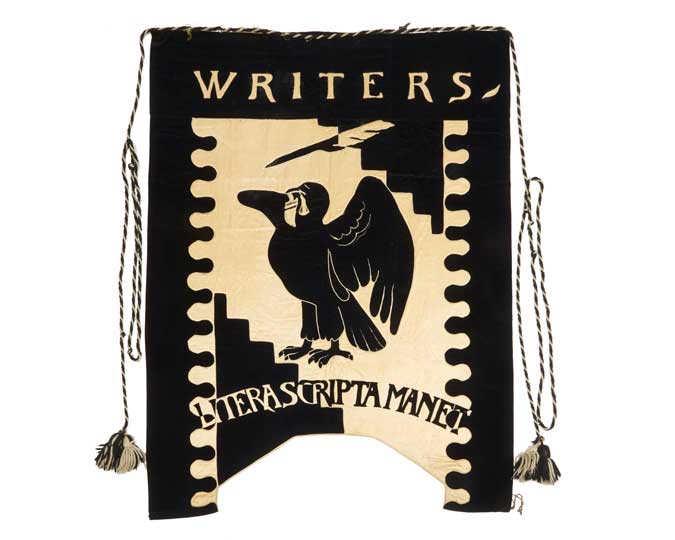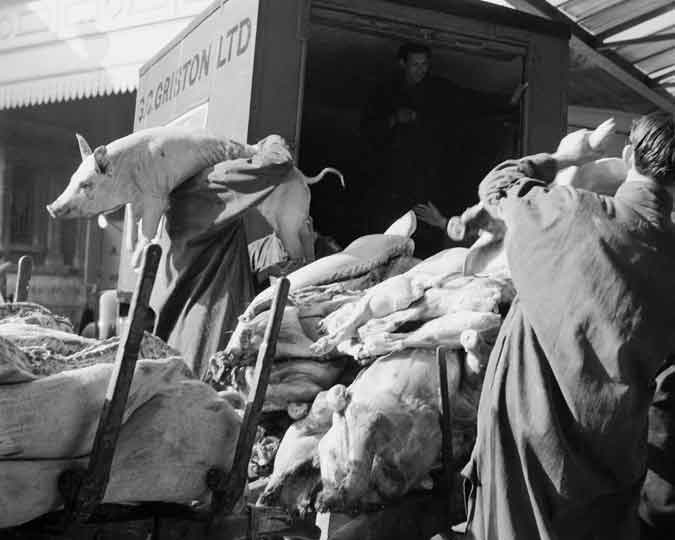8 March marks International Women's Day. We've teamed up with charity Womankind Worldwide who fight for equality for women and girls worldwide, to trace the connections between their work and the historic struggle for Votes for Women.
The Museum of London holds the world's largest collection relating to the Suffragette movement. Curator of Social & Working History Beverley Cook looks at how the Suffragettes fought for Votes for Women in Britain a century ago, while Chloe Halpenny describes some of the campaigns Womankind supports around the world today.
Leading the struggle
Womankind works around the world to support women's movements, local organisations who campaign for female equality. One of the things they work towards are policies and laws that tackle discrimination and protect women. This focus on political change was shared by campaigners for Votes for Women, over a century ago. Like Womankind, the Suffragettes believed that giving women a greater voice in politics would help change the whole of society. If women could vote, they would be able to change Britain for the better. In the words of one suffrage artist: "We want the vote to stop the white slave traffic, sweated labour, and save the children."
These women's movements help to spearhead campaigns for change, inspiring and organising their communities around specific demands, just as the Suffragettes once did.
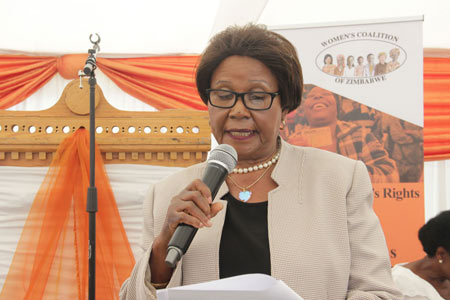
Women’s Coalition of Zimbabwe, September 2017
This high-level discussion brought together 120 representatives from the media, bureaucracy, political parties, civil society, and women’s organisations.
Chloe Halpenny: The Women’s Coalition of Zimbabwe (WCoZ) – an umbrella body of women’s rights organisations– is working to increase political participation and representation among its country’s women.
Zimbabwe's Women in Politics Support Unit (WiPSU) are also campaigning to for greater roles for women in politics, and work to increase female voter participation. They encourage women to stand for election, and lobby the government to accept different forms of identification for voting so that more people (particularly women) can cast their votes. Finally, WiPSU is working to develop a peace pledge to encourage politicians to sign onto to ensure safer and less violent elections, as well as hold individuals accountable.
In April 2017, WiPSU participated in the Section 56 campaign launched by WCoZ, demanding that Section 56 of the constitution, which asserts the equality of all, is implemented in national policy. The group marched through the streets of Harare, along with other organisations and activists across the country.
Chloe Halpenny: In Nepal, the Feminist Dalit Organization (FEDO) represents a movement of Dalit women with over 50,000 members spread over 2,000 women’s groups across the country. The majority of their work centres around campaigning for better representation of Dalit (the lowest Hindu caste) women in decision-making structures, and they have campaigned fiercely to achieve pretty significant gains in this regard. In 2017, efforts by FEDO helped result in the 2017 Local Level Election Act, which stipulated that that at least two out of the four members of each Ward Committee must be women and that one should be a female member from the Dalit community.
Beverley Cook: The Votes for Women campaign in Britain was organised by a range of suffrage organisations. Some, such as the Women's Social and Political Union, believed in taking ‘direct action’ to achieve the right to vote. Others, such as the National Union of Women's Suffrage Societies, campaigned within the boundaries of the law and did not support militancy.
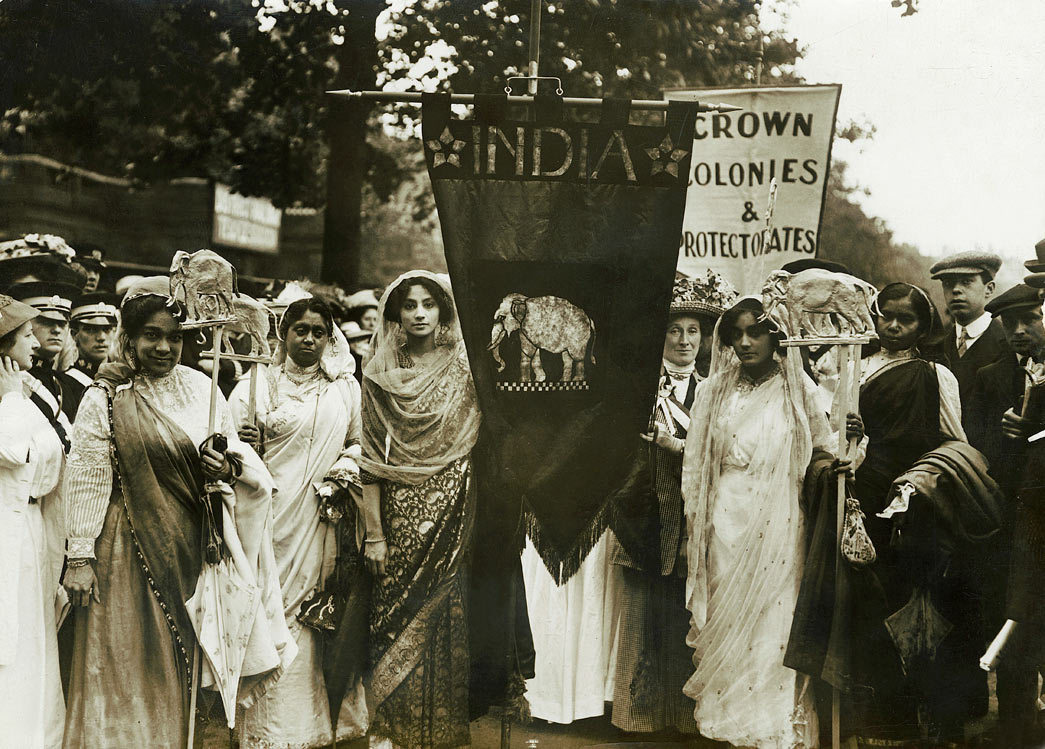
Photograph of Indian suffragettes on the Women's Coronation Procession, 17 June 1911
The India procession was part of the 'Imperial Contingent' and intended to show the strength of support for women's suffrage throughout the British Empire.
Beverley Cook: At the heart of the British Votes for Women campaign were a group of highly committed and motivated women of all ages and social backgrounds who worked effectively together to become agents for change. The inspirational leaders of the militant Suffragette movement in particular stimulated a spirit of revolt in their supporters.
This gave them the self-confidence and courage to challenge the male-dominated society in which they lived and push boundaries with regards the traditional domestic and passive role of women.
Campaign tactics: Art and education
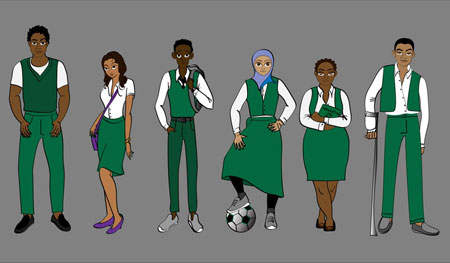
Image from the GenderShop feminist curriculum
Chloe Halpenny: In Ethiopia, we support our partner Setaweet to develop a “feminist curriculum”, which is currently being piloted in a number of secondary schools around Addis Ababa. Called GenderShops, the curriculum aims to engage directly with young people to challenge gender norms, everyday sexism and stereotypes, and tolerance of gender-based violence. Using a set of cartoon teaching materials portraying diverse Ethiopians, this programme aims to equip students with the tools to challenge (and hopefully transform) gender relations in schools, and eventually wider society.
As a campaign tactic, we think this is particularly important, recognising the value of both young people and the education system in championing a more gender-equitable world, placing advocacy in the hands of the next generation.
Beverley Cook: Suffrage campaigners knew that they needed to reach every age and class in their struggle for Votes for Women.
As well as deeds and words, they also used art to challenge female stereotypes and reveal the irony and absurdity of gender inequality. Humorous postcards and posters lampooned anti-suffrage arguments, spreading the message beyond traditional political channels.
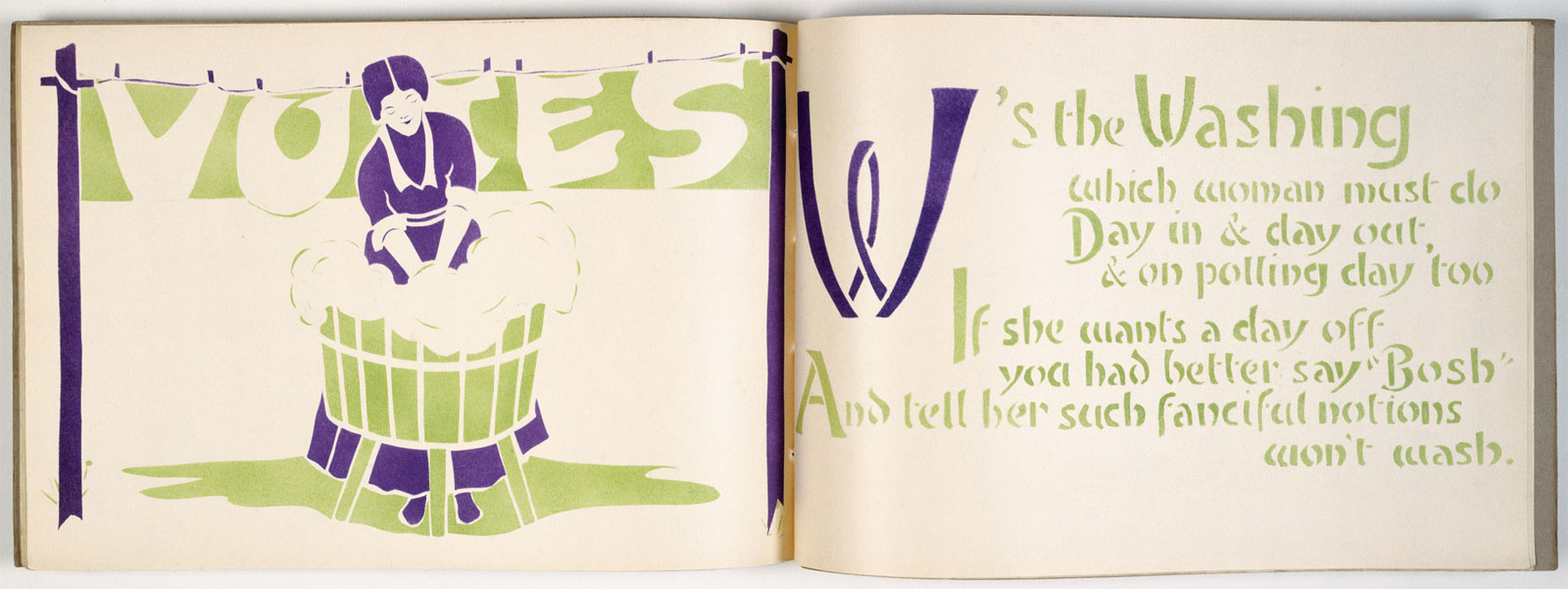
An Anti-Suffrage Alphabet, 1911
Satirical book mocking opponents of female suffrage in the style of a children's alphabet primer.
Courage and comradeship empowered the militant Suffragettes to defy the state and opposition from the public, many of whom ridiculed and satirised the women and their cause.
The sound of suffrage
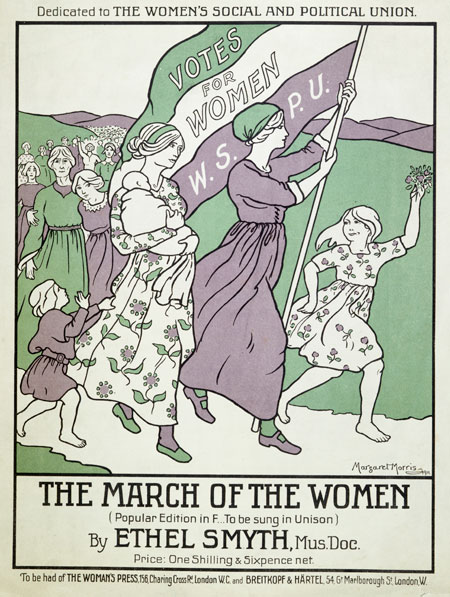
Music score and words for 'The March of the Women'. Composed by Ethel Smyth with words by Cicely Hamilton.
Chloe: In Uganda, the National Association of Professional Environmentalists (NAPE) have established a radio station called Community Green Radio where women’s stories are broadcast. Radio staff source stories from local women’s groups, with prominent topics including the gendered impacts of land grabs in Uganda and climate change and pollution. NAPE creates Listeners' Clubs, where women can gather with radios to listen to the station.
NAPE also organises women’s drama groups, where women gather to act out the impacts of the oil industry on their communities. Robina, one member said: “Through the drama, we share our issues, livelihoods, and ideas. Women at the grassroots level who may not have a voice watch us and then feel like they can have a voice too.”
Beverley: Votes for Women campaigners also understood the power of words, music and drama to empower their female supporters and effectively argue their cause. The cause of women's suffrage was supported by the Actresses' Franchise League, whose ranks included musicians and dancers.
Composer Ethel Smyth wrote 'The March of the Women', a rousing song to inspire members of the Women's Social and Political Union. Suffragette newspaper Votes for Women wrote: "It is at once a hymn and a call to battle."
The struggle continues
Chloe: The struggle to protect the rights of women and girls is ongoing around the world. Womankind works with groups like the Federation of Women Lawyers-Kenya (FIDA), which trains Kenyan community health workers, police officers, and local government officials to help prevent gender-based violence and female genital mutilation. FGM is a particularly pressing issue in Kenya, and FIDA is also actively pressing for legal reform surrounding the issue. While the issues championed by the women’s movement in Kenya and the UK may be different, the tactics used at a national level are often the same, like protest marches and political campaigns.
Beverley: Achieving the right to vote was regarded by the Suffragettes as the beginning of a new era for women. Only once women achieved representation in parliament would they be in a position to influence change in other areas of women’s lives including work and the rights of mothers. Although the Suffragettes celebrated when some women gained the right to vote in Britain in 1918, they recognised that it marked the beginning and not the end of a long fight for female equality.








